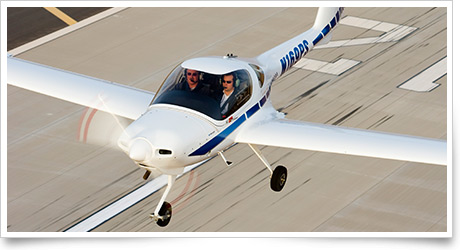training tips‘Painting’ the stripe
To you, it’s a frustrating mystery. There’s no crosswind—you know how to handle that—and you’re not overcontrolling, a problem that once spoiled some of your nicer efforts.
So what’s up?
In many cases, it’s a small problem that produces a disproportionately large result: When arriving in the touchdown zone and beginning the roundout, some pilots try to aim at the centerline over the middle of the aircraft’s nose—that is, the prop and spinner—instead of placing the white stripe directly beneath the pilot’s seat.
What’s wrong with that?
Unless you fly a tandem-seat aircraft, your seat is not directly above the trainer’s longitudinal axis. So instead of looking directly forward as you flare and touch down, you are sighting the centerline from the side. (A pilot in the left seat will tend to touch down left of the centerline; a pilot in the right seat will touch down right of the centerline.)
That’s a detail often overlooked in discussions of the sight picture a pilot should aim for during a landing approach, when you learned to look beyond your intended touchdown spot when judging descent rate and timing your flare because the view closer to the aircraft is blurred by the aircraft’s motion over the ground. Making the small adjustment required to touch down directly on the stripe will provide the finishing touch.
To clearly observe the effect of this minor sighting error on your landings, try this ground experiment: Seated in the left seat of your tied-down aircraft—or even in the driver’s seat of your car—look straight ahead at an object at a modest distance, say 20 feet away. Then change your line of sight to view an object over the center of the nose at a like distance. Note their separation. Now it’s easy to see how using the second aim point causes your touchdowns to become offset from the centerline.
Make the small adjustment in your sighting method on your next landing, and a vexing problem disappears!
Learn more about perfecting your landings in “The runway-alignment reflex” by flight instructor Rod Machado. training productsPrivate Pilot Helicopter Supplement CourseKing Schools is offering the Private Pilot Helicopter Supplement Course. The CD-based course covers helicopter aerodynamics, operations, FAA regulations, and performance and weight/balance. iPad Mini caseThinking about using the new iPad Mini in the cockpit? Now you can strap it onto your leg like a kneeboard. PilotMall.com offers a case and leg strap mount with a 360-degree rotating cradle for the iPad Mini.
Note: Products listed have not been evaluated by ePilot editors unless otherwise noted. AOPA assumes no responsibility for products or services listed or for claims or actions by manufacturers or vendors. final examQuestion: I’d like to go flying this morning, but on preflight I realized the airplane has a bulb burned out in the anti-collision light system and there’s no A&P mechanic to fix the bulb here at my airport. I am flying an airplane that was certificated after March 11, 1996. Can the airplane be flown, or does a mechanic have to come fix the light first?
Answer: The airplane can be flown, but only to a place where you will get the bulb repaired or replaced before you depart again. Part 91.205 (b)(11) states that an aircraft must have all lights working in the anti-collision light system: “For small civil airplanes certificated after March 11, 1996, in accordance with Part 23 of this chapter, an approved aviation red or aviation white anti-collision light system. In the event of failure of any light of the anti-collision light system, operation of the aircraft may continue to a location where repairs or replacement can be made.”
Got a question for our technical services staff? Email [email protected] or call the Pilot Information Center, 800/872-2672. Don’t forget the online archive of “Final Exam” questions and answers, searchable by keyword or topic. |
 Your landing approach is going well, but long before you touch down a few feet to the left of the centerline, the flight instructor seated next to you knows what is going to happen.
Your landing approach is going well, but long before you touch down a few feet to the left of the centerline, the flight instructor seated next to you knows what is going to happen.

